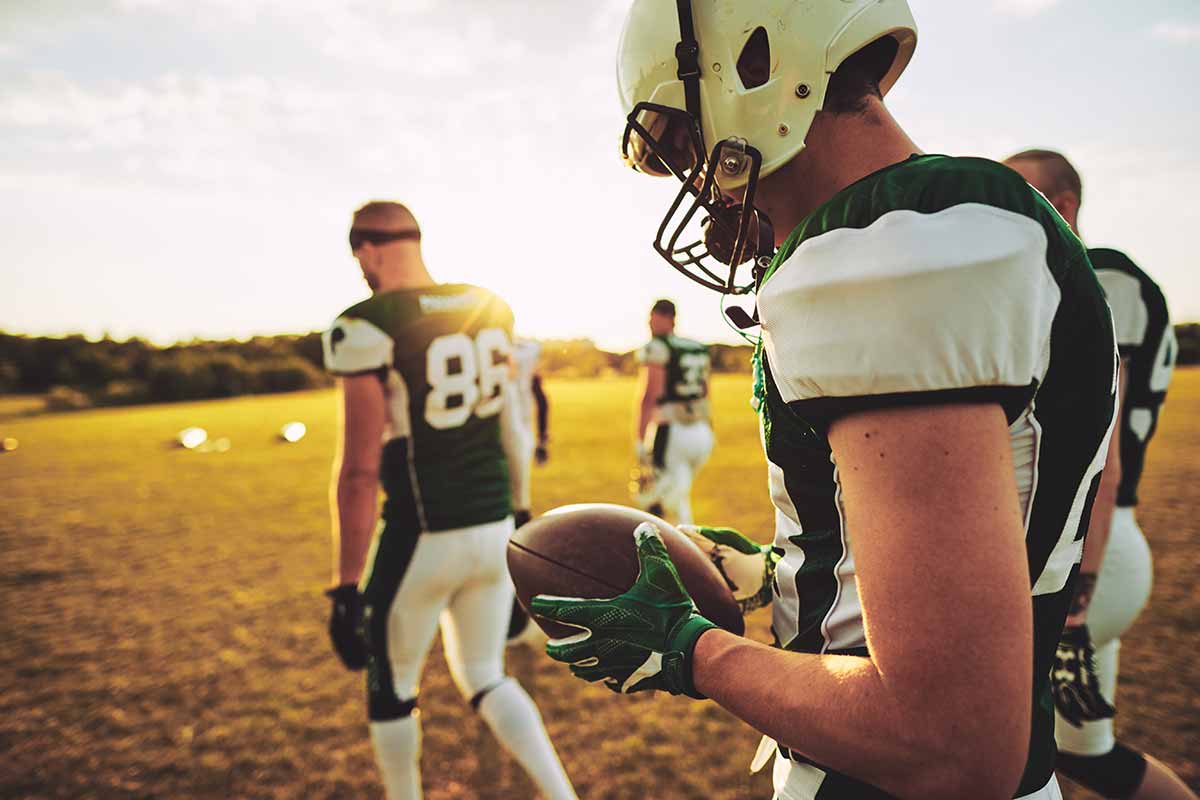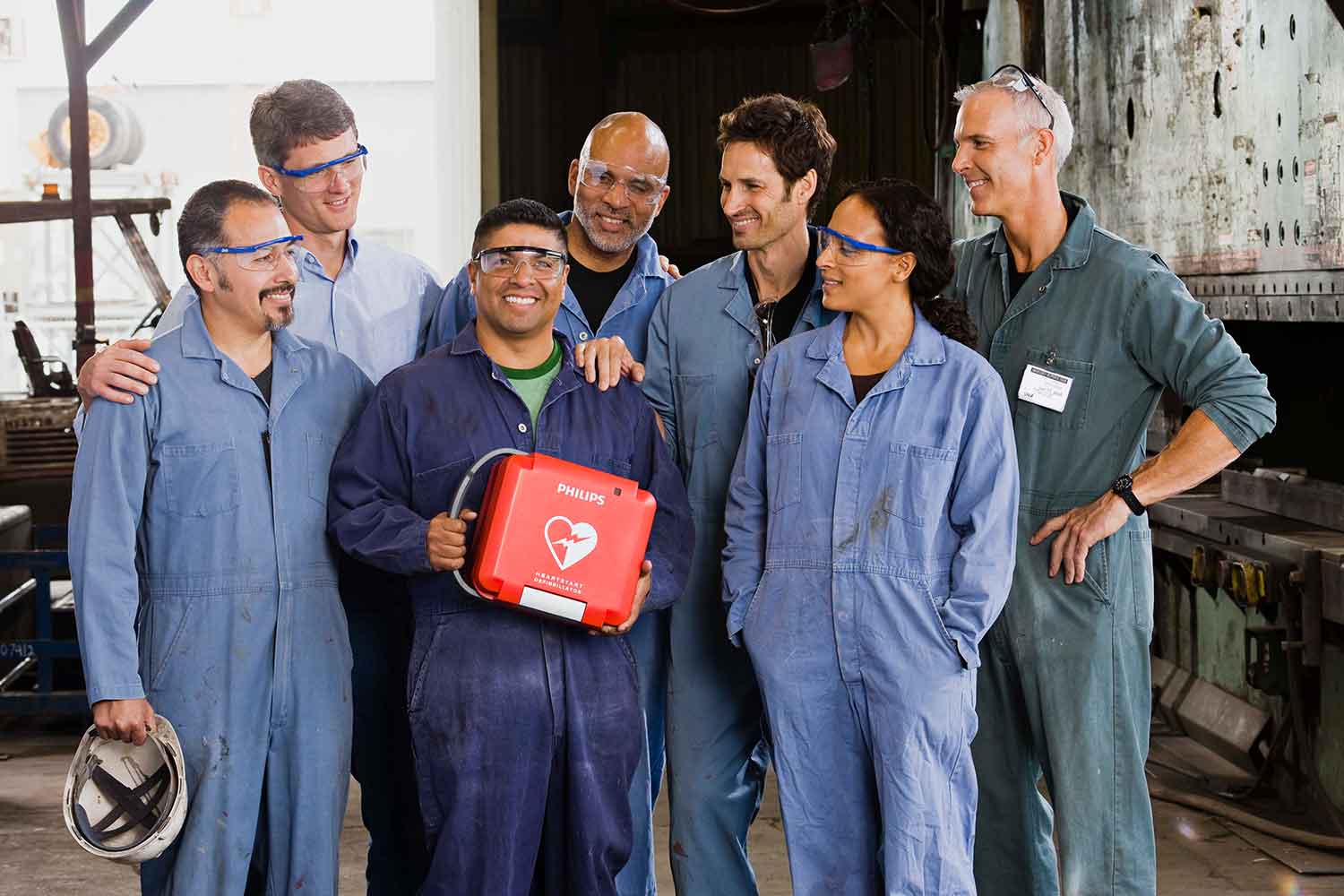Imagine this scenario. You’re the coach for the local midgets lacrosse team. Your team is in the middle of an evenly-matched playoff game. As the opposing team attempts a goal to tie up the game, your defensive midfielder takes a hit in the chest by the ball. As the referee is signaling a foul for unnecessary roughness on another player, your midfielder collapses. What would you do?
Typically, when a young player collapses on the field, the response is hesitation and confusion. Bystanders present usually believe at first that the wind has just been knocked out of the player, underestimating the severity of the trauma.
Unfortunately, this is not always the case. The injury may be life threatening and a quick and appropriate response is necessary.
The sudden, unexpected death of a young athlete is an unfathomable tragedy. It affects friends, family, the team players, coaches, the sports league, and the community. It is natural for everyone to wonder what could have been done to prevent this horrific tragedy.
Fortunately, this scenario is extremely rare. It should not stop anyone from encouraging kids to play sports and stay active.
Let’s take a look at what can happen and why quick access to an automated external defibrillator (AED) may be a necessary component of any sports team.
What Causes Sudden Cardiac Death in Young Athletes?
Currently, no official registry tracks cases of sudden cardiac death (SCD) in athletes. It is rare, with an estimated incidence of from 1 in 200,000 to one in 300,000.
Most cases of SCD in young athletes are due to hidden heart defects or overlooked heart abnormalities. These deaths usually occur during physical activity such as when participating in a sporting event
A condition known as hypertrophic cardiomyopathy (HCM), which is an abnormal thickening of the heart muscle, accounts for 25% of sudden cardiac deaths. Other causes are inherited coronary artery abnormalities, heart rhythm disorders, inflammation of the heart, and structural abnormalities. Usually, it is unknown that these young athletes have a heart condition at the time of collapse.
Another condition that can cause SCD is commotio cordis. Unrelated to any pre-existing heart conditions and caused by blunt cardiac injury, it accounts for 20% of sudden cardiac deaths.
The common end result for nearly all cases of sudden cardiac death in young athletes is a fatal abnormal heart rhythm. Initiation of CPR (cardiopulmonary resuscitation) and defibrillation (AED) is the only chance of survival.
What is Blunt Cardiac Injury?
Direct force to the chest can cause myocardial contusion, or bruising of the heart. This is known as blunt cardiac injury. A direct blow to the chest combined with the direct transfer of injury during impact can cause a sudden forceful deceleration and compression of the heart between the sternum and the spine.
The most frequent causes of this type of injury are traffic accidents, violent fall impacts, interpersonal aggression, and high-risk sports.
Blunt chest trauma leads to a wide range of injuries, from relatively minor soft tissue wounds to fatal lung and heart damage. The damage to the heart can cause a life-threatening arrhythmia (irregular heartbeat) and heart failure. One life-threatening condition caused by blunt cardiac injury is commotio cordis.
What is Commotio Cordis?
Commotio cordis is a Latin term that means commotion or disturbance of the heart. It is used as a medical term to describe sudden cardiac arrest (SCA) from a blow to the chest.
An ill-timed blow to the chest can trigger commotio cordis. After squeezing blood out to the body, the heart resets for the next contraction. If at that moment, during the reset phase, something hits the chest wall right over the heart – and it doesn’t take much force – the heart can go into ventricular fibrillation.
Ventricular fibrillation (V-fib) is the most commonly identified arrhythmia that causes SCA. A person whose heart goes into V-fib immediately collapses.
A projectile, such as a batted baseball, can cause a blow to the chest that results in commotion cordis. Researchers have found in animal studies that the optimum speed for a baseball to cause commotion cordis is only about 40 miles per hour. Many baseball pitchers can easily throw at that speed.
Keep in mind that optimum speed does not mean the minimum speed. There is a documented case where a father tossed a softball underhand to his 6-year-old son at a picnic. The ball skimmed off the child’s glove, hit him in the chest, and caused a fatal cardiac arrest.
This may explain why that in most reported cases of commotio cordis, sudden death follows a seemingly inconsequential, non-penetrating blow to the chest. In these situations, witnesses have generally believed that the blow to the chest was of insufficient force to cause major injury and was out of proportion to the outcome.
What is the Incidence of Commotio Cordis?
The U.S. Commotio Cordis Registry in Minneapolis, MN tracks cases of commotio cordis and has documented over 250 occurrences since its formation. Approximately 10-20 events are added to the registry every year. The actual incidence is believed to be much greater due to lack of recognition and underreporting.
Commotio cordis occurs most frequently in young people under the age of 18 during sports activities. The most recent data indicates that 53% of the victims were engaged in organized competitive athletics, while the rest were involved in normal daily activities (23%) or recreational sports (24%).
The sudden death rate is highest in lacrosse, followed by hockey and baseball. Other high-risk sports include softball, soccer, football, and karate.
In most instances, a projectile struck the victim. The projectile was usually a baseball, softball, hockey puck or lacrosse ball estimated to be traveling 30-50 mph at most. In the remaining cases, chest trauma resulted from bodily contact with another person or a stationary object; for example, another player’s football helmet, the heel of a hockey stick, and a karate kick.
Healthy young athletes are especially at risk because of the pliability of their chest walls. One study of 55 cases of sudden cardiac arrest (SCA) found that 90% were 16 years old or younger. All were playing sports either organized or informally. None of these children showed evidence of any heart defect or disease.
Can These Sudden Cardiac Deaths Be Prevented?
The only true prevention of commotio cordis is to eliminate bumps to the chest, so realistically, there is no way to prevent it in high-risk sports.
Chest protectors and softer balls have been suggested. Protective equipment cannot eliminate cardiac injury. Commercially available chest protectors have not been proven to prevent commotio cordis for athletes playing baseball, lacrosse, hockey and softball. The American Academy of Pediatrics recently endorsed the use of softer baseballs that were found to reduce risk of commotio cordis.
The only proven prevention of this scary occurrence is through emergency preparedness. Use of an Automated External Defibrillator (AED) dramatically increases survival rates if used within minutes of a collapse.
With defibrillation (use of AED) at one minute, the survival rate can be as high as 90%. Within 5 minutes, the survival rate can be as high as 50%. The survival rate of SCA decreases 7-10% for every additional minute that passes without defibrillation. By the time the Emergency Medical Services (EMS) typically arrive (9-12 minutes), the survival rate drops to 5%.
One study looked at athletes who experienced commotio cordis from being struck by a lacrosse ball or stick. Timely defibrillation was performed on seven. Four survived.
Survival after a commotio cordis event has become less of an exception compared to earlier eras. Fortunately, there has been a progressive decline in fatality related to commotio cordis incidents. From 1970-1993, the survival rate was only 10%. The survival rate from 2006-2012 has increased to 58%.
This favorable change is attributed to earlier recognition, earlier initiation of CPR, and the use of an AED that is readily available.
Recognition and quick action is key. Prior to 2001, of the 128 cases documented, 25% of those treated immediately survived. For those patients whose treatment was delayed at all, only 3% survived.
Your Sports Team Emergency Response Plan
Public Access Defibrillation (PAD) is a critical component of the emergency response program for a sports team. An emergency response plan should include cardiac events, trauma, asthma, and other injuries.
The one action that can prevent deaths from sudden cardiac arrest is responding quickly and appropriately. Part of that response includes knowing CPR and access to an AED.
Training coaches, bystanders and other sports personnel in the recognition of commotio cordis, timely response, and basic life support training is essential. All coaches should be trained in be CPR and AED use.
All sports teams should have an established emergency response plan. It the case of the sudden collapse of a player on the field, the plan is as simple as follows:
- Player observed collapsing after getting hit in the chest
- Rush to child and check for breathing / responsiveness
- Order closest parent or coach to call 911
- Begin CPR without delay
- Order someone to get the AED immediately
Yes, sudden cardiac death among young athletes is very rare, but that doesn’t matter very much if it happens to a player on your team. AED access can provide a safer environment and peace of mind.
Resources
http://emedicine.medscape.com/article/902504-overview
http://www.ncbi.nlm.nih.gov/pmc/articles/PMC2966575/#CIT4
http://www.ncbi.nlm.nih.gov/pmc/articles/PMC155532/
http://circ.ahajournals.org/content/125/20/2511.full
http://nocsae.org/research/research-grants-and-contracts/the-national-commotio-cordis-registry/



